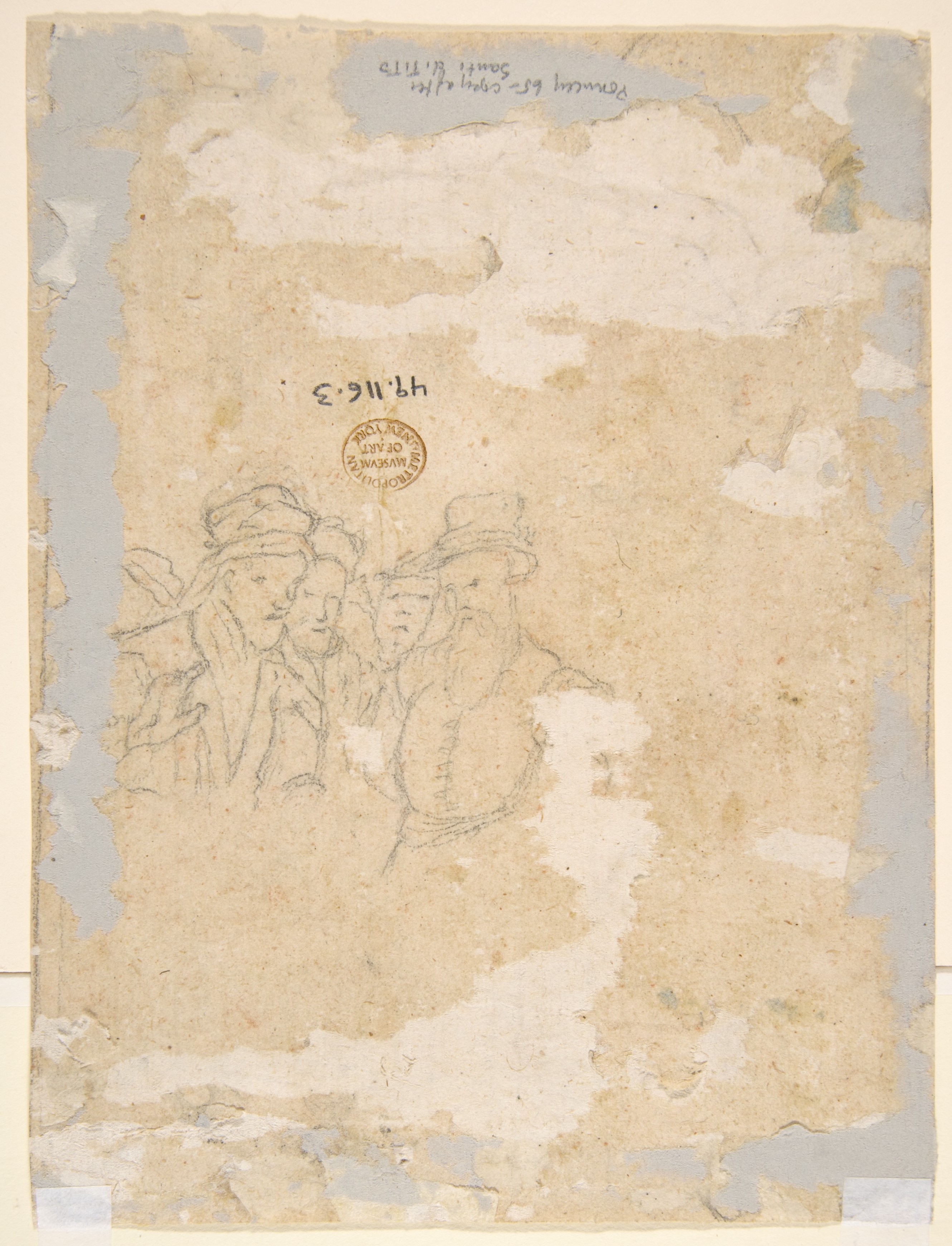Saint Anthony of Padua Healing a Sick Man (recto); Partial Figural Studies Based on the Composition on the Recto (verso)
Attributed to Tiberio Titi Italian
or Santi di Tito Italian
Not on view
Philip Pouncey first noted in 1965 that this drawing might be a copy after Santi di Tito (as annotated on the verso of this sheet). As pointed out by Carmen Bambach, the Metropolitan's sheet seems to be a very closely related copy of the drawing with Saint Anthony of Padua healing a sick man (Teyler Museum B 71, Haarlem), attributed to the Circle of Santi di Tito by Carel van Tuyll van Serooskerken. This is probably a copy done in Santi di Tito's workshop because the handling of the pen seems close enough to his general manner. The Teyler sheet is discussed and illustrated in Carel van Tuyll van Serooskerken, The Italian Drawings of the Fifteenth and Sixteenth Centuries in the Teyler Museum, Haarlem, 2000, p. 166, cat. 100.
The author of the Metropolitan drawing is more probably Tiberio Titi, the son of the more famous painter, Santi di Tito (Borgo Sansepolcro 1536 - 1692 Florence), as proposed by Carmen Bambach. The abbreviated facial notations are extremely characteristic of Tiberio's draftsmanship and can be seen in Tiberio's study for the Birth of the Virgin (Istituto Nazionale per la Grafica di Roma, FC 127645).
Although van Tuyll connects the Teyler sheet to the painting of St. Francis da Paola Healing a Cripple (S. Giuseppe, Florence), this drawing and the Metropolitan sheet do not convincingly relate to this altarpiece. The architectural setting and perspective are more complex and confused in the pen and ink designs as opposed to the more unifed, monolithic background in the painting. In addition, the figural arrangement in both sheets also reads with a greater naturalistic simplicity. Furthermore, the orientation of both drawings is in the reverse direction.
Due to rights restrictions, this image cannot be enlarged, viewed at full screen, or downloaded.
This artwork is meant to be viewed from right to left. Scroll left to view more.





